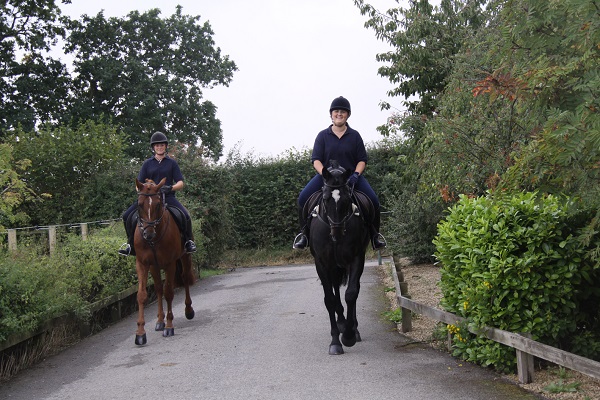Posted: 16th April 2020 | Back to news feed

Bitting experts, Abbey England, make thousands of bits in their UK foundry every year. Designed and produced by highly skilled craftsmen, every bit is individually handmade and can be customised to suit your requirements.
The possibilities are endless, even for traditional bits, as they can be lightweight, normal weight or made with a variety of mouth and cheek pieces.

INTRODUCTION
When faced with any bitting problem you must look at the horse as a whole. This will include checking his teeth, back, saddle and any other factors which may be affecting him such as the rider’s ability and his level of training. Once you have eliminated all other possible causes of a bitting problem, you can then turn your attention to the actual bit.
Q “My horse goes behind the bit and drops the contact altogether”
Richard says: “If a horse drops the contact or won’t take the bit forward you should first check that it is not pinching the tongue or the corners of the mouth. Horses use their tongue as a feeler and it is a large muscle that fills the whole mouth. Any bit that you place in a horse’s mouth is sandwiched between the tongue and the roof of the mouth. It is extremely important that the bit you use for an individual horse is comfortable and that there is adequate room for it. In this instance you might try a slim bit with a forward curve. Place the bit between the palms of your hands and move it around. Imagine that your palms represent the horses tongue and the roof of his mouth. Then ask yourself, how does it feel? Would I like this bit in my mouth?
Q “I can’t stop my horse out hacking”
Richard says: “There is no mechanical device that will stop a horse out hacking if it decides to take flight. You need to ask yourself why the horse won’t stop. Is he suitably trained for hacking out? Is he an ex racehorse that associates hacking out with a journey to the gallops? Is he in any pain or discomfort? The most important thing is that horse and rider are safe, so seriously question if the horse is suitable for hacking out at this stage in his training. If you are able to figure out why the horse won’t stop and address this problem then you might like to use a bit which offers more control but is not severe. One suggestions is a leverage bit with a curb strap. A leverage bit distributes the pressure inside the mouth, on the jaw and a little on the poll giving the rider more signalling ability, whereas an ordinary snaffle distributes all of the pressure in the mouth.”
For more information visit www.abbeyengland.com
The Equestrian Index newsfeed is compiled from articles submitted by advertising members and expresses the opinions of those members. Watsons Directories Ltd shall not be held liable for any inaccuracies or mis-statements therein.